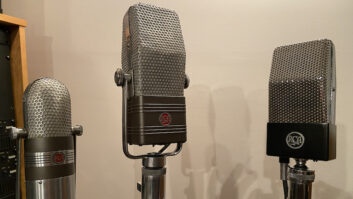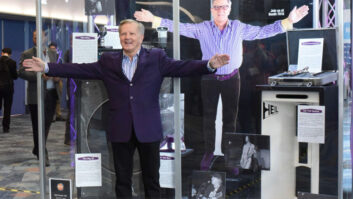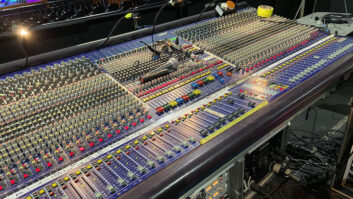
Bob Boster, president of Clear-Com, shares his insights into the value of maintaing a constant flow of information in this guest blog post.
In the world of production, the idea of a “need-to-know basis” is expanding rapidly. Not too long ago, only a few key technical and logistics personnel needed to share an intercom link to maintain a constant flow of information. In the last few years, however, several factors have begun to boost the number of team members who are connected.
As staging and events become more sophisticated across theater, houses of worship, corporate gatherings, streaming broadcasts, community events and educational venues, there are more stakeholders in creating a seamless experience. Add to that the additional challenges of tighter personnel budgets and growing numbers of volunteer operators, and it’s easy to see why teams are seeking new ways to provide real-time communication for operations and knowledge-sharing.
The use of intercoms by technical teams has long been understood as key to coordinating lighting, sound, video and staging cues, but in today’s more immersive experience environment, critical show information must also be shared among event staff, security, food and beverage, and facilities maintenance teams.
That means more team members are connecting via intercom, an expansive trend further enabled by new digital technology options that make it easier to use more systems at once. Fortunately, as more people get connected via headset, desktop or app-based two-way intercoms, these new intercom options also make it easy to partition channels for simultaneous communication—so that, for instance, the security and clean-up crews won’t be hearing all the lighting cues and vice versa.
It’s not just the number of systems that’s growing though; we are also seeing an interesting evolution in the way that intercoms are being used to share knowledge. Now in addition to managing operations, users are plugging into hands-free headset communications for a lively conversational form of on-the-job training. With the friendly voice of an expert in their headset, a new apprentice or volunteer can become a valuable contributor right away, taking on new tasks with real-life instructions happening just when they need them most.
Whether the situation calls for clear instruction one-on-one, or if a whole team is getting vital information on their own separate channel, we’re entering a world of shared knowledge that elevates the level of skill across a team. Now an intern can benefit from the experience of a seasoned colleague in real-time with easy exchanges in full-duplex communications. With a headset and a more senior operator’s instructions provided live in hands-on applications, suddenly, that intern has 30 years of experience behind their actions. As an added bonus for the novice operator, both of their hands are free because they’re interacting via headset instead of holding a walkie-talkie.
This shared communication allows the overall quality of production to come up to the level of the most-trained person, rather than potentially falling to the level of the least-trained person. When someone is new on the job, or taking on an extra role to sub in for one show, it’s a great confidence booster to know that they’ll have someone helping them out.
Mattel Links Its AV Studios with Clear-Com
Intercoms help create new connections, particularly in environments where a number of enthusiastic volunteers would love to get involved in improving the production quality of their house of worship or community theater. As new volunteers come on board, more experienced operators can offer training via headset, and help create lasting knowledge.
In these ways, intercom systems can truly be empowering. They allow any user to feel more confident because they know somebody is right alongside them—even if remotely—to help them make the right moves.
Zooming out from an individual level to the efforts of the various teams that work together to ensure that a production moves along smoothly, intercoms are also connecting many new moving parts to make sure the show is great. When an actor or guest speaker needs to travel from backstage to do a crossover in the lobby, for example, clearing the area and making sure the move happens safely is a lot easier when each staff person can talk to the next along the way.
Coordinating a behind-the-scenes move like that is an essential use of intercom in a live production, but it’s also evidence of yet another way that intercoms help to create the most advanced productions today. Long before that performance moment happened, it was coordinated among the complete crew of designers and technicians during tech rehearsals. Lately, the flow of these preparatory show design sessions have also changed as a result of the use of more intercoms. In the past, a limited amount of communications channels put a cap on the number of people who could work and communicate at the same time, causing a lot of waiting around for each team to get set; now with digital intercom systems, many teams can maintain constant communication at the same time.
From beginning to end, the best productions are a finely calibrated result of a lot of moving pieces. A tremendous amount of expertise and skill is required to make these shows happen, and now that knowledge can be shared more easily. Together, relying on intercoms to keep the conversation going, more team members can rise to the same level. With so many more voices being heard, everyone is connected for that big moment when the curtain goes up and the show begins.







